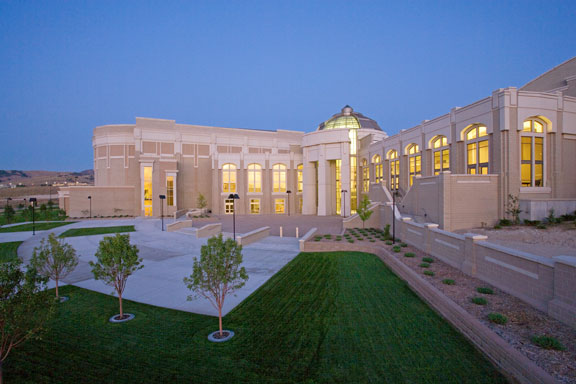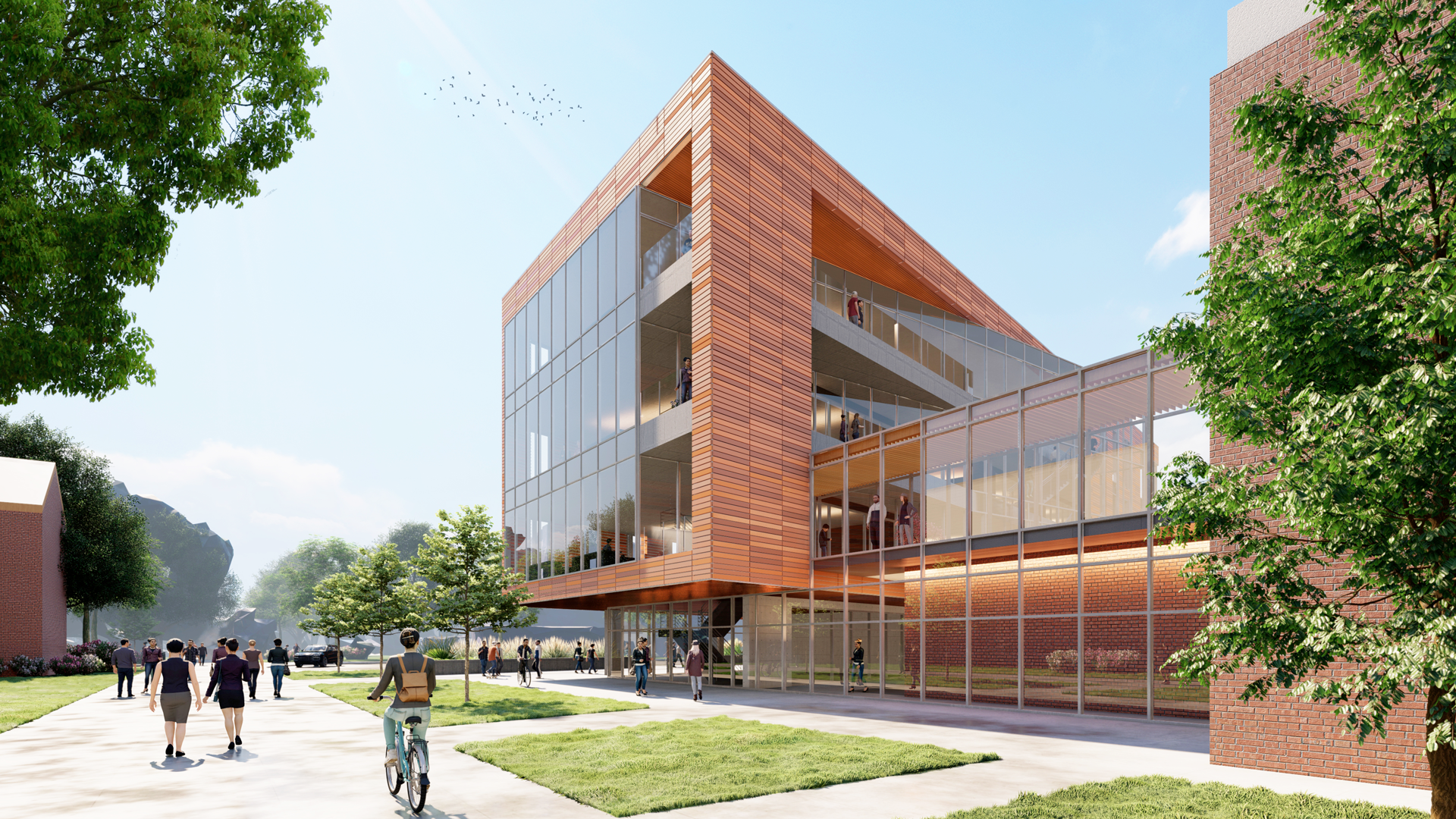HIGHER EDUCATION
Micron Center for Materials Research
In association with Anderson Mason Dale Architects
The Micron Center for Materials Research is a 92,000 SF, world-class academic and research facility located in the heart of Boise State University’s campus. The building exemplifies the University’s goal to become a leader in academics, research, and civic engagement.
The 92,000 SF building features 25 state of the art research labs (with room for an additional 17 labs), one 250 seat lecture hall, two 80 person classrooms and a Student Power Center. The building includes research labs for Materials Chemistry, DNA/Bio-Nano, Thin Films, Applied Electro-chemistry, Computational Research and a shared Instrumentation Lab Suite. Home to the Micron School of Materials Research.
CLIENT
Boise State University
PROGRAM
Programming
Conceptual Design
Space Planning
Design Development
Construction Documents
Construction Administration
LOCATION
Boise, Idaho
SQUARE FOOTAGE
92,000
AWARDS
Top Project of the Year, Idaho Business Review Top Projects, 2021
People’s Choice Award – Public, Idaho Business Review Top Projects, 2021
Building Excellence Awards – Excellence in Sustainability, City of Boise, 2021
Outstanding Designs: Post-Secondary, 2021 American School & University Architectural Portfolio
The building is organized in two separate wings, one dedicated to research spaces and one dedicated to teaching spaces. The lab wing is home to research laboratories, teaching laboratories, workspace for faculty, post-doctoral, and graduate students, and support staff to facilitate cutting-edge research.

Sustainability
Consuming almost three and a half times as much energy as an office building, a lab building such as this requires even greater attention to detail to meet sustainability goals. The design began with a comprehensive energy model to evaluate building energy consumption throughout the design process. Energy monitoring and utility measuring dial-in usage during occupancy. Key sustainability features include the use of both active systems such as advanced mechanical systems and high-efficiency lighting, and passive systems, such as native planting and on-site water retention, natural light, a high-efficiency building envelope, and designing for future adaptations to keep labs functions over the life of the building. Sustainability features were incorporated into the building not just as a part of energy savings, but also to meet the goals of the University as a teaching facility.
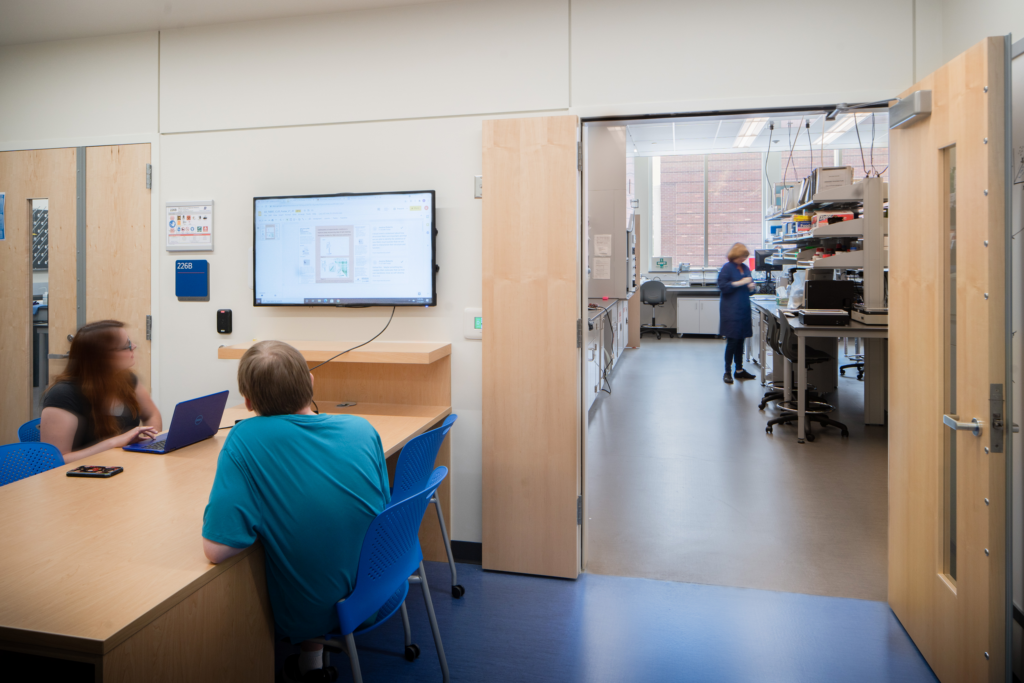
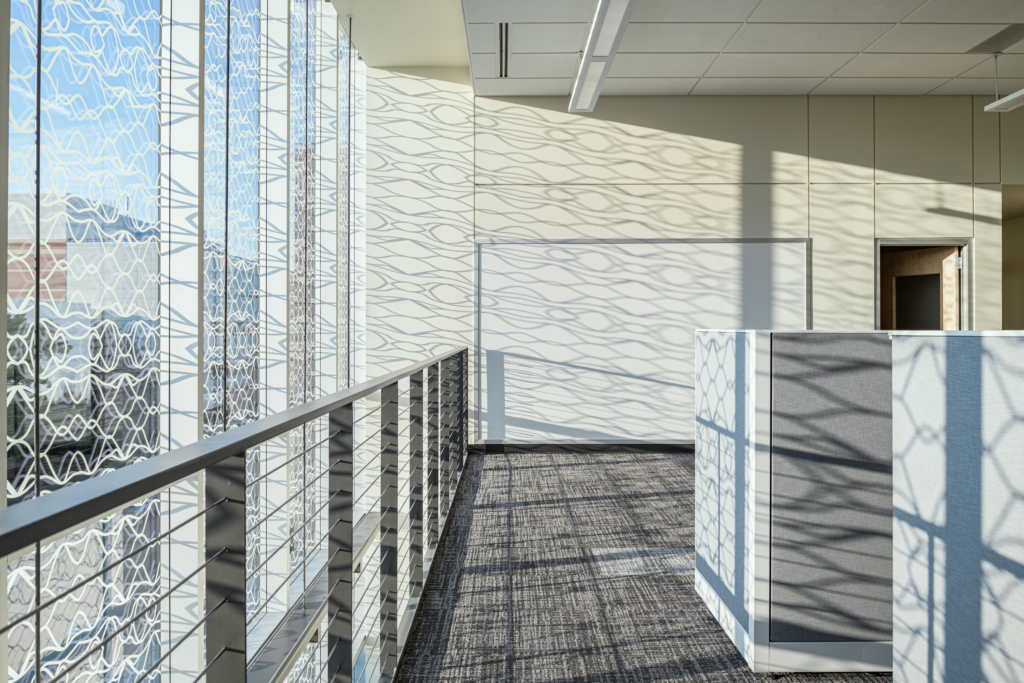
The mechanical systems were configured as a more targeted system than in a typical building to enhance user comfort. In the labs, point-of-use cooling and occupancy controls reduce cooling loads. The classrooms and lecture halls use perimeter heating, displacement ventilation, and strategically placed vents to more effectively heat and cool users and also provide increased air quality. The Ceramic Frit on the south-facing windows is an example of another goal of the building serving as a teaching tool. This shading device helps reduce peak cooling demand loads during the summer, and shadows created on the wall are an artistic representation of the chemical signature for silicon.
Overarching Design Principles
- The building serves as a teaching tool – using the building’s construction materials as a tool for explaining the concepts in materials science
- Truth in materials – constructing the project with materials that are what they seem—concrete, steel, wood, and glass
- Building as a gathering place – serving the Boise State community by providing spaces for interaction both inside the building and out
- The site responds to the needs of the campus and the needs of the building by providing different types of spaces for formal and informal gatherings
- Light-filled gallery connecting the teaching, offices, and research spaces which casual interactions between building all occupants
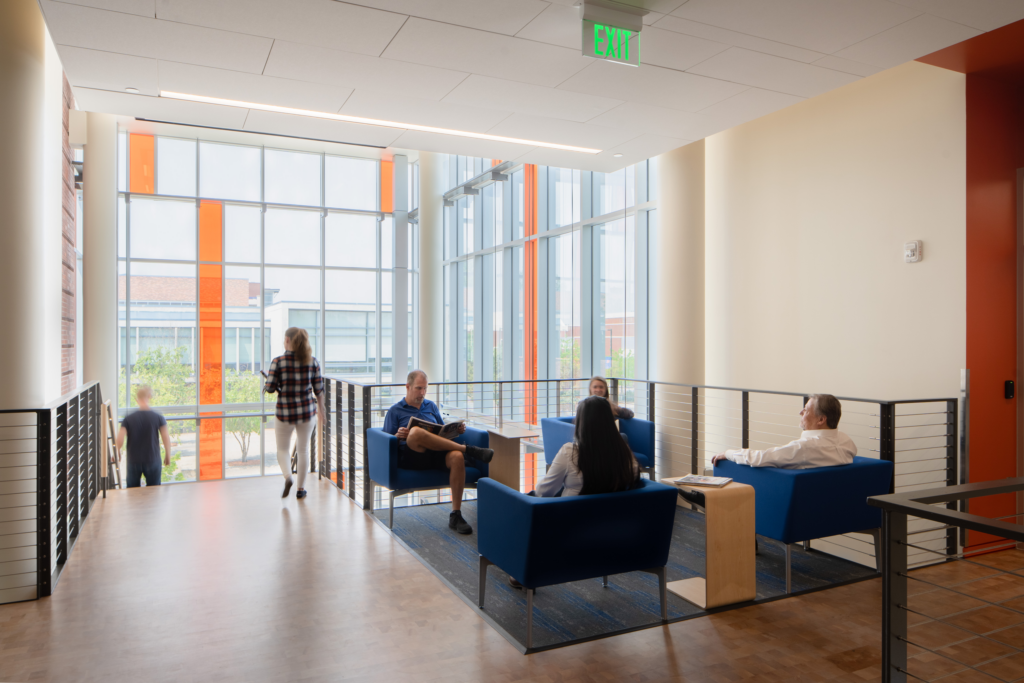

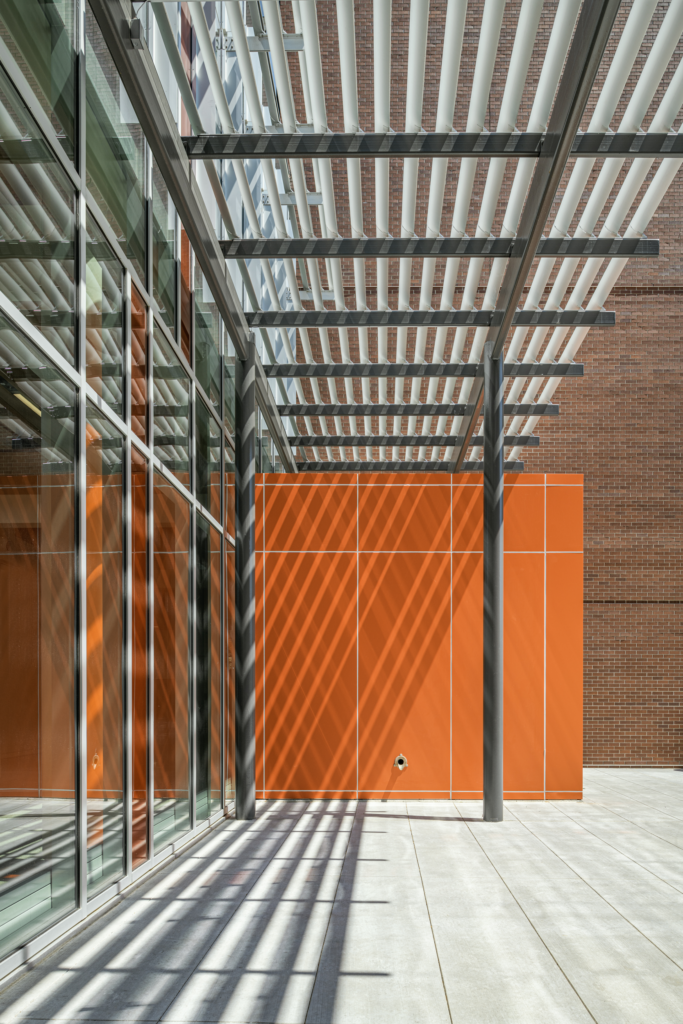

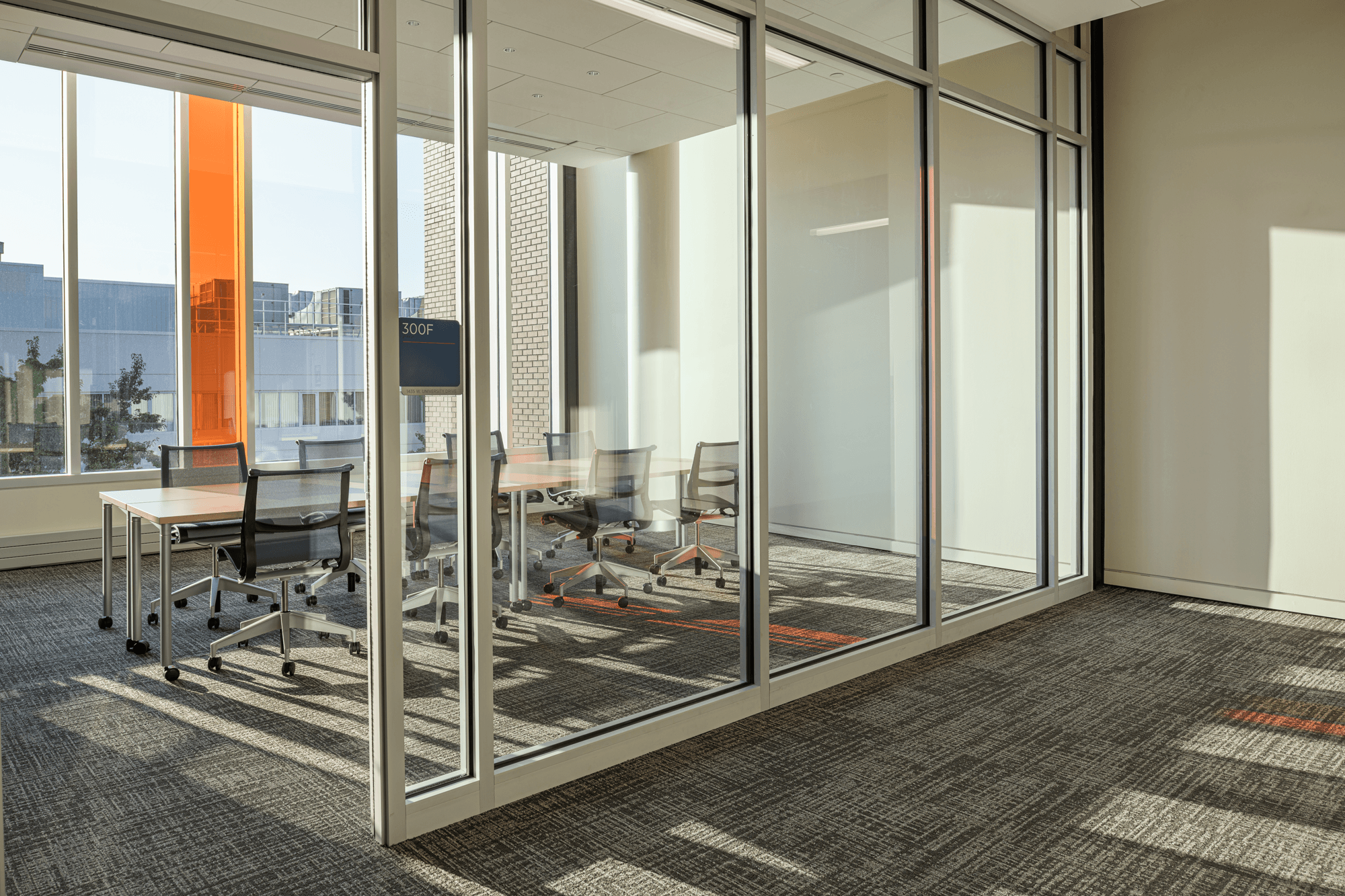
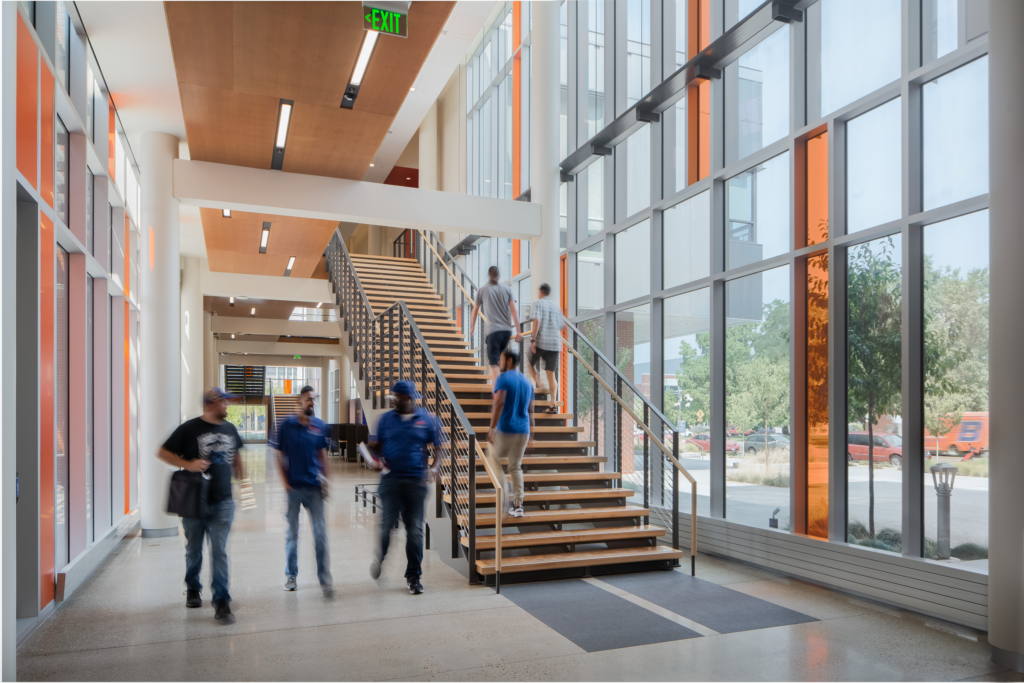
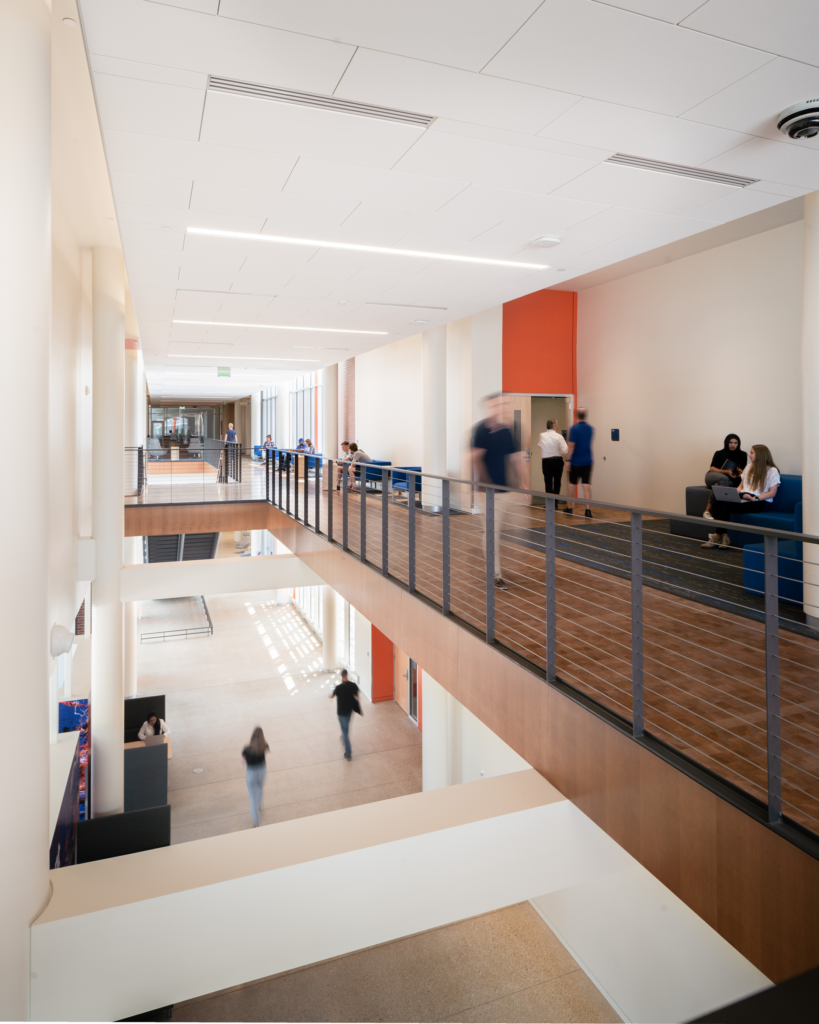
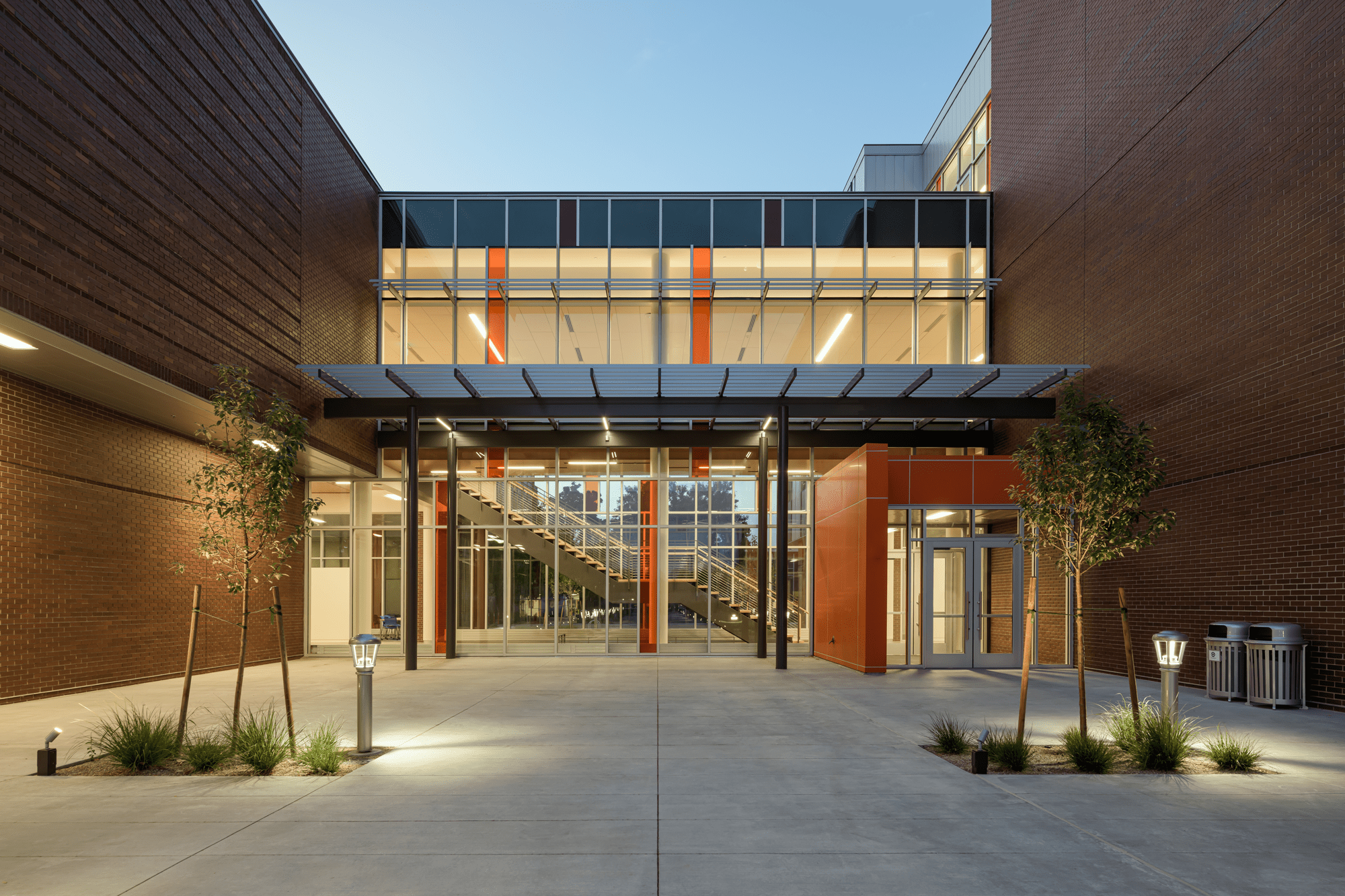
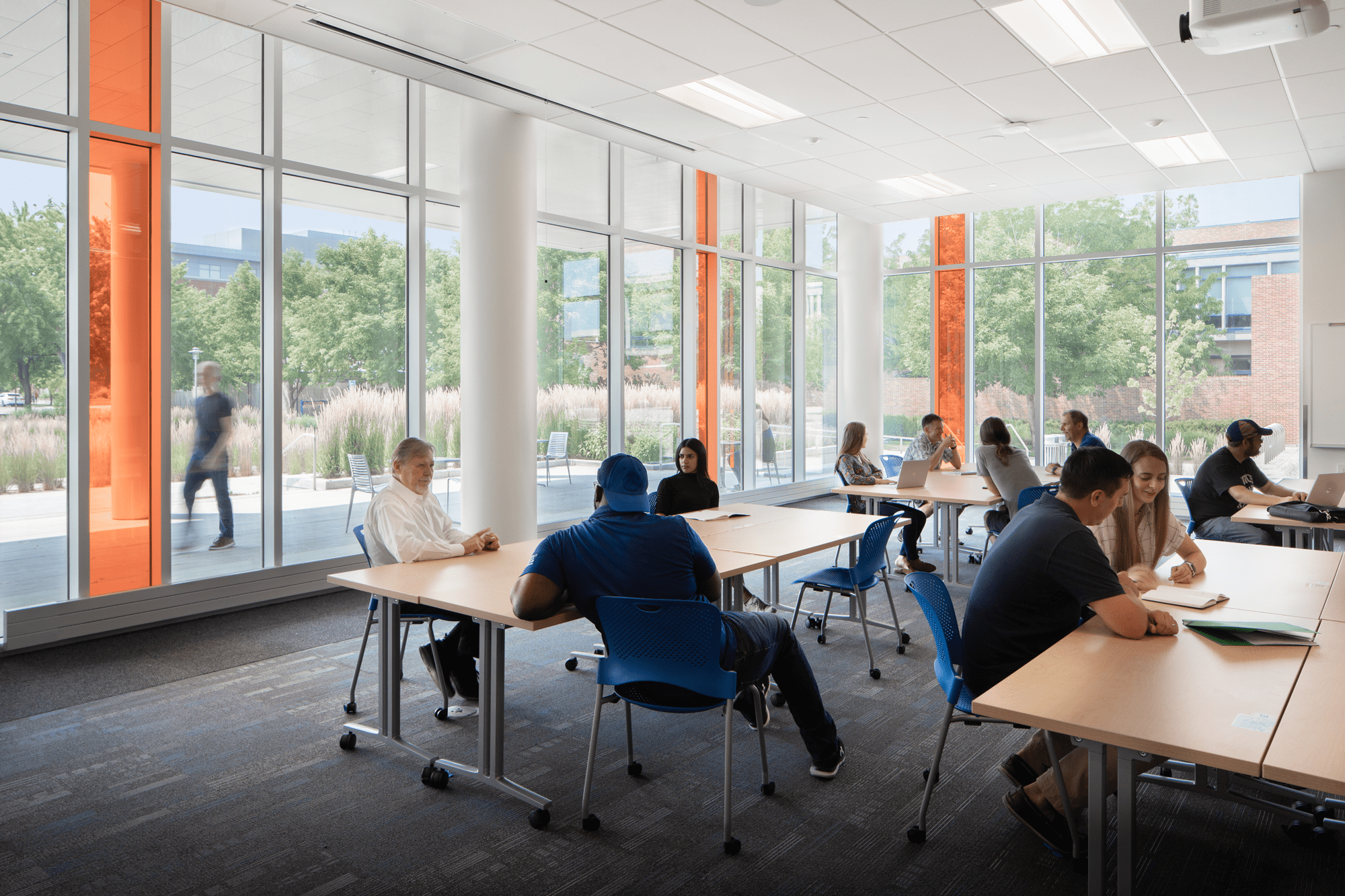
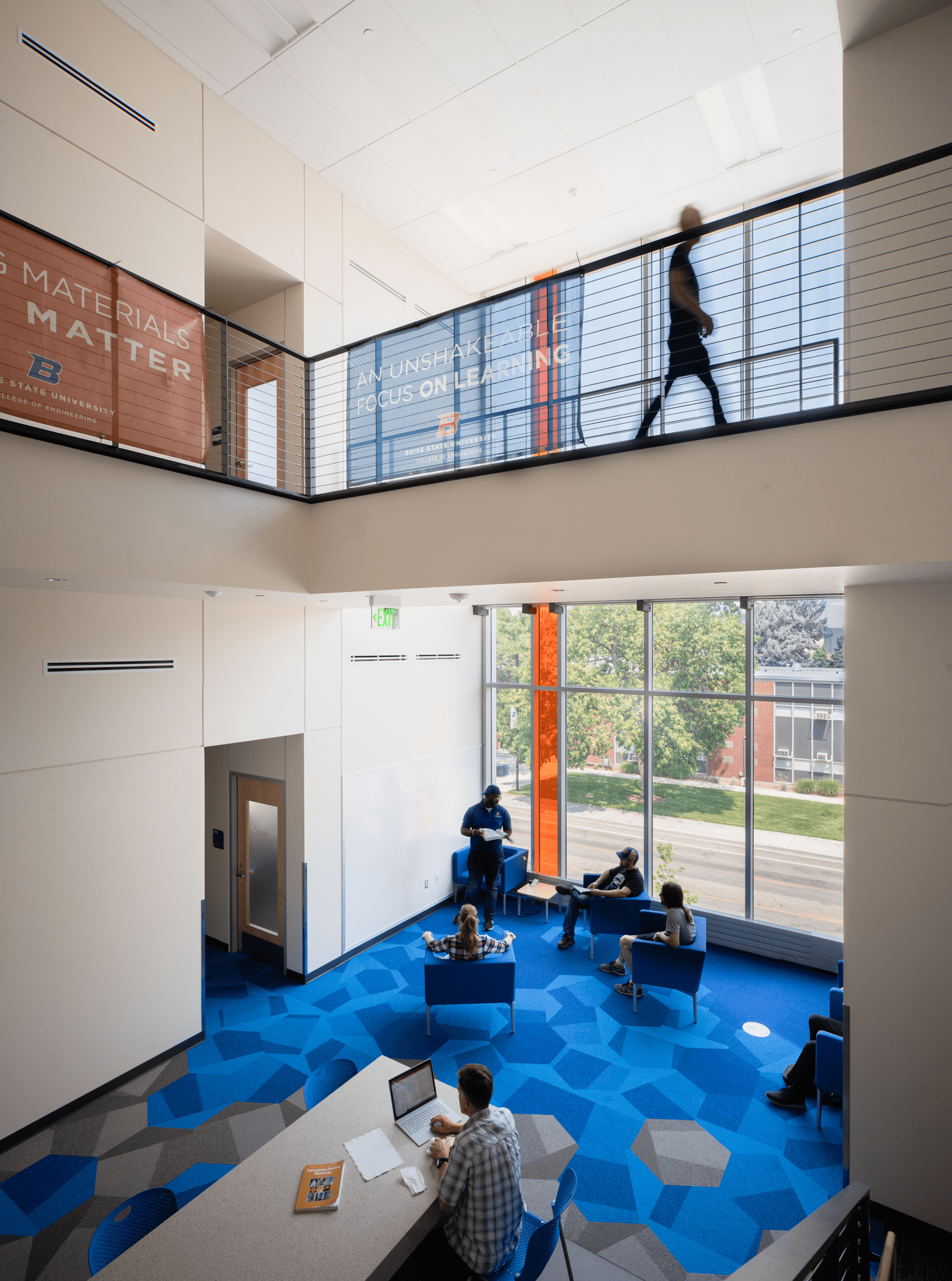
“It has been wonderful to see how students are able to use the different indoor and outdoor spaces to work on campus and connect with others. The flexibility speaks so much to the potential the space holds,”
Jessica Economy, Academic Programs Manager (as quoted in the Arbiteronline.com)
Related Projects
Take a closer look at our other projects


